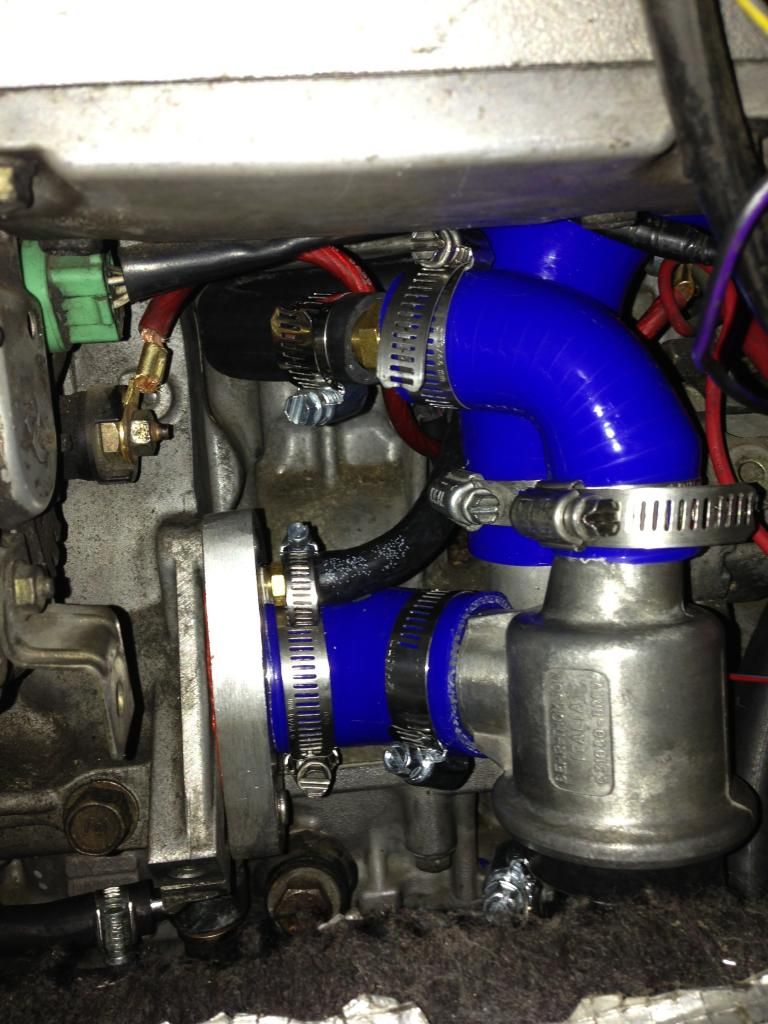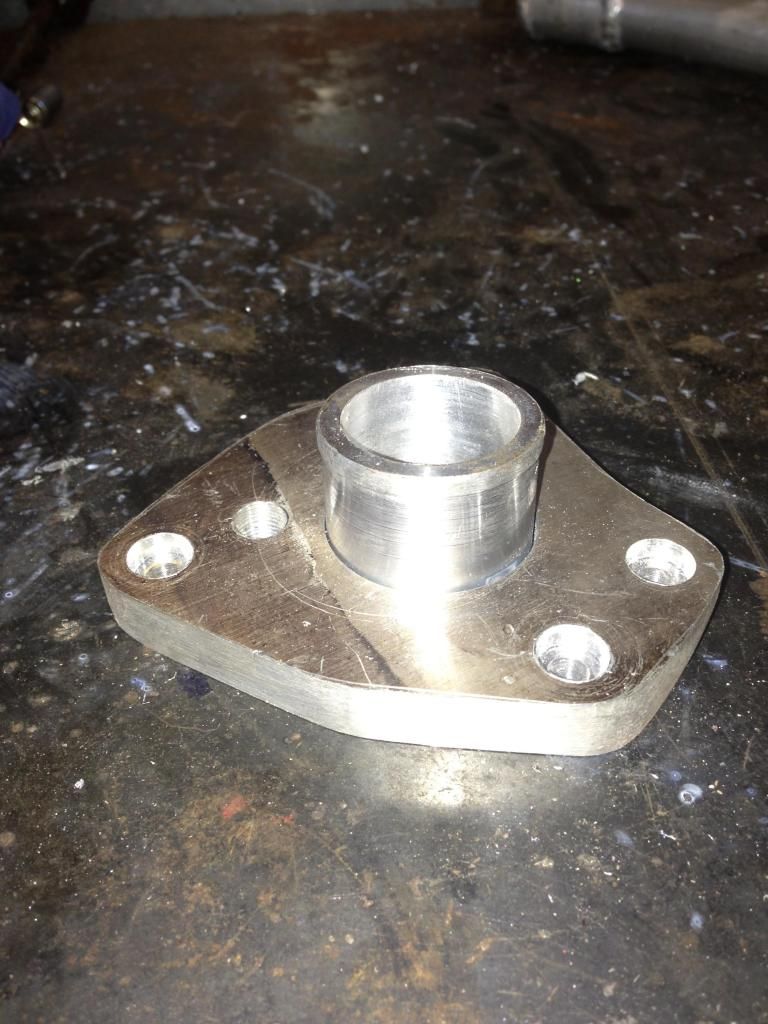Kevin Cozzo
True Classic
Ok, tell me I'm crazy, but I'm playing around with an Idea..I want to rid my X of the horrible thermostat system. I have a 1" thick piece of aluminum that I need machined to fit the end of the head, with just a 1-1/2" npt
I plan on putting a big brass elbow coming out, and put a inline thermostat housing to the radiator. Haven't figured out the bypass to the tank, but thinking of tapping into the adapter plate edge to go to the top hose on the tank, and "T" the bottom hose into the heater hose return on the heater hose
i live in Texas, and even when the car is cooling optimally, I still notice peaks, or spikes, and me thinks the stock thermostat situation is just getting "confused"...always had this problem and noticed others have too. my mod will hopefully alleviate this, and I'll have thermostat choices easily available, as the inline uses chevy thermostats
I'm putting the engine back together right now, on the stand, and I'm gonna go ahead and put the stock system on with a stant 160 degrees thermostat...yes you can get one from rock auto, but really want to experiment with this. My original idea was to mount a Chevy thermostat, directly on an adapter, but the bolts that hold the original housing on would make that difficult...
so who can machine this for me? my machinist wants 80 bucks just to make the 1.5" tapped hole, then I gotta figure how to cut the outside part and drill the bolt holes. anyone interested in contributing to solving this problem? not looking for free, but a little cheaper
I plan on putting a big brass elbow coming out, and put a inline thermostat housing to the radiator. Haven't figured out the bypass to the tank, but thinking of tapping into the adapter plate edge to go to the top hose on the tank, and "T" the bottom hose into the heater hose return on the heater hose
i live in Texas, and even when the car is cooling optimally, I still notice peaks, or spikes, and me thinks the stock thermostat situation is just getting "confused"...always had this problem and noticed others have too. my mod will hopefully alleviate this, and I'll have thermostat choices easily available, as the inline uses chevy thermostats
I'm putting the engine back together right now, on the stand, and I'm gonna go ahead and put the stock system on with a stant 160 degrees thermostat...yes you can get one from rock auto, but really want to experiment with this. My original idea was to mount a Chevy thermostat, directly on an adapter, but the bolts that hold the original housing on would make that difficult...
so who can machine this for me? my machinist wants 80 bucks just to make the 1.5" tapped hole, then I gotta figure how to cut the outside part and drill the bolt holes. anyone interested in contributing to solving this problem? not looking for free, but a little cheaper



